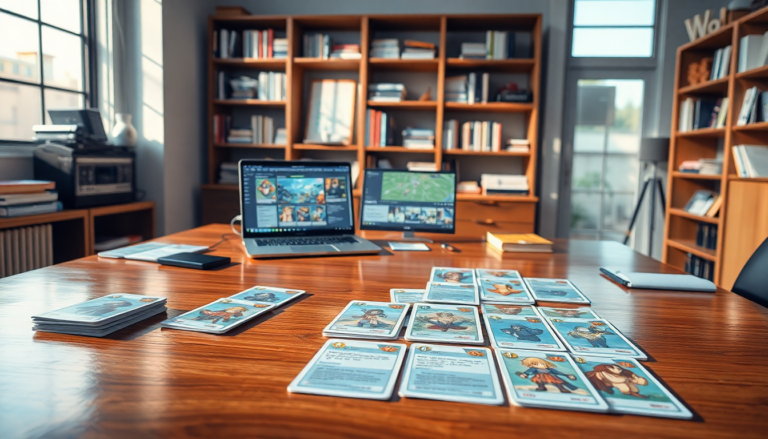Argomenti trattati
When it comes to game development, particularly in the realm of RPGs, innovative mechanics can really boost player engagement and enjoyment. One exciting trend that’s been gaining traction is the card-style battle system. It offers a fresh twist on traditional RPG combat without completely transforming the core gameplay. In this article, we’ll explore how developers can seamlessly integrate card mechanics into RPG Maker VX Ace, resulting in a more dynamic and visually appealing experience.
Why Card-Style Mechanics are Catching On in RPGs
Card mechanics have a long-standing presence across various gaming genres, adding a visual and strategic flair that enhances gameplay. In RPGs, where strategy and character development are key, introducing cards to execute skills or attacks can deepen the experience without overshadowing the elements players already love. The aim here is to enrich the classic battle system by using cards to represent skills or actions—not to replace the entire setup with a card game.
Imagine a scenario where each character possesses a unique set of cards representing their abilities. During battles, players can choose cards to unleash attacks, cast spells, or utilize special skills. This approach not only delivers a visually stimulating experience but also prompts players to strategize their moves based on the cards in their hands. The flexibility of this system allows developers to keep the essence of RPG combat while introducing a new layer of interaction. Isn’t that an exciting prospect?
How to Implement Card Mechanics in RPG Maker VX Ace
If you’re a developer eager to introduce a card-style battle system in RPG Maker VX Ace, a good starting point is to look into existing scripts that facilitate this integration. One standout example is the Cardgame Skill/Battle System by Pencilcase27. It serves as a foundational reference, showcasing how cards can be effectively woven into the RPG Maker framework. By studying this script, you can gather valuable insights to adapt similar mechanics for your own game design.
But don’t overlook the user interface (UI)—it plays a crucial role in the player experience. A clean and intuitive UI will make it easier for players to navigate between selecting cards and executing actions. Consider adding enhancements like animations or sound effects that activate with card plays, which can really bring battles to life. Who doesn’t love a bit of flair in their gaming experience?
It’s also vital to strike a balance between card mechanics and the overall game design. Ensure that the card system complements existing combat mechanics, rather than overshadowing them. Achieving this balance will provide players with a cohesive and enjoyable experience, keeping them hooked throughout their journey.
Resources and Community Support
The RPG Maker community is a goldmine of resources for developers eager to innovate. Forums and dedicated websites are filled with scripts, plugins, and discussions that can guide you in crafting engaging card-style battle systems. Collaborating with fellow developers can yield valuable insights and feedback, helping you refine your mechanics and enhance overall gameplay. Have you tapped into this supportive community yet?
If you’re keen to explore card mechanics further, don’t miss the archived posts and scripts available online. They can unveil a wealth of knowledge and practical tools. Whether you dive into direct scripting or work with existing frameworks, the possibilities for innovative gameplay are endless.
Conclusion: Embracing Innovation in RPG Development
As the gaming landscape evolves, embracing innovative mechanics like card-style battle systems can help a game stand out in a competitive market. By merging traditional RPG elements with fresh ideas, developers can craft immersive experiences that resonate with players. With the right resources, community support, and a clear vision, integrating cards into RPG Maker VX Ace opens up exciting new gameplay possibilities. Are you ready to take the plunge?

